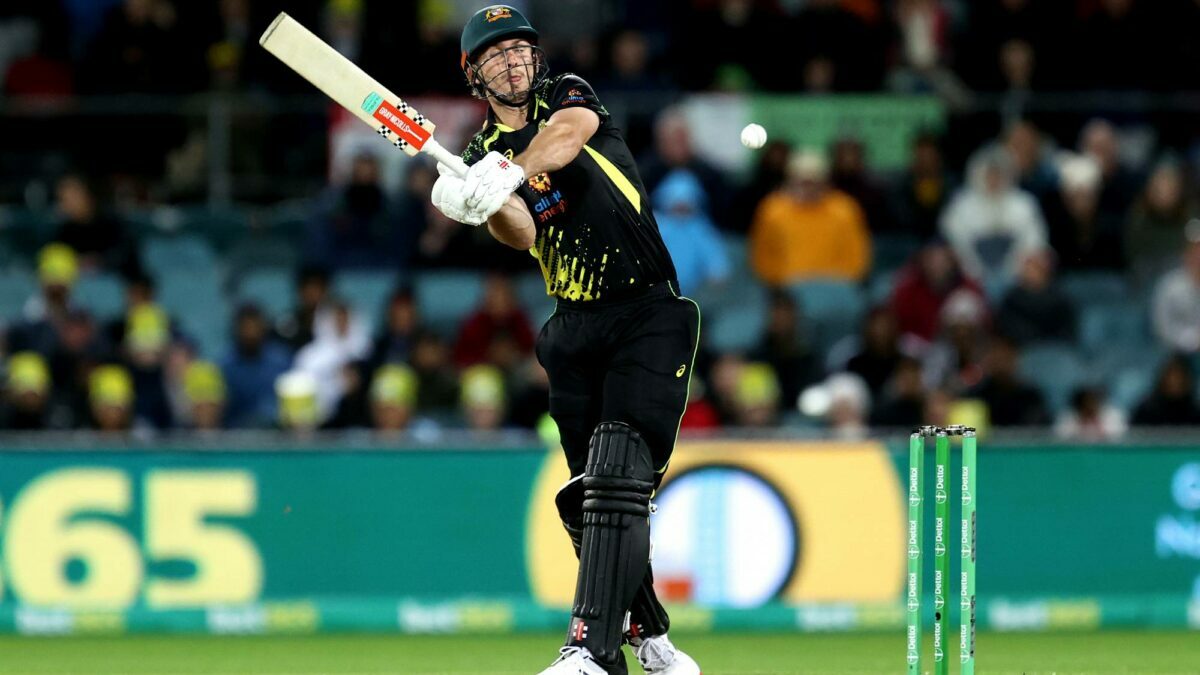A new chapter in Legends of the Mitches was written recently as the Starc and Marsh versions delivered a devastating one-two gut punch to the Indian one-day side.
Mitch Starc took five wickets and Mitch Marsh finished India off with a rollicking 60 not out.
The ‘Mitchell’ is a peculiar species within the ecosystem that is Australian cricket. There have been three in recent memory to play a significant part in the Australian cricket story: Marsh, Starc and Johnson (apologies to Mitchell Swepson), each sharing some common characteristics:
- They appear to be good blokes
- They are capable of dizzying heights, well beyond mere mortal players
- They are capable of devastating lows
- There is often no way of predicting whether good Mitch or bad Mitch will turn up on a given day
- Their stereotypes have been ingrained in the public consciousness and gained a life of their own.
Johnson was the trailblazer. Talented, terrifying, inconsistent, lacking in confidence and slow to embrace his role as the enforcer of Australian cricket – “He bowls to the left” and all that.

Mitchell Johnson. (Photo by Ryan Pierse/Getty Images)
One of the biggest problems that the Australian cricket public had with Johnson, especially in the early years, was that his ceiling was so incredibly high, he was turned upon whenever he was merely average.
Capable of scoring Test hundreds at a rapid rate and taking seven or eight wickets in an innings whenever he ventured west of the Nullarbor, Johnson was embraced and rejected in equal measure, often within consecutive series.
It wasn’t until 2013-14 Ashes and the ‘Summer of Mitch’ that he finally took his place as a bloody legend within the Australian cricketing pantheon.
Johnson won 53 per cent of his 79 Tests with a bowling average 13 per cent better than his fellow Australian bowlers – since 1920, Johnson’s strike rate in wins for Australia has only been bettered by Dennis Lillee – so when Mitch was good, he was very, very good.
But the allegation is also that when he was bad he was awful.
In losses, Johnson averaged 40.7, however this was 8.7 per cent better than his peers in those same matches. In draws, he had a nearly 15 per cent better bowling average than his peers. His strike rate was nearly 29 per cent better and is the fifth best of all time in draws for Australia.
When the pitch was giving him nothing and the games was dwindling away, Johnson fought more than almost anyone.
So Johnson was actually a strike bowler in all circumstances and when he got it right he was unstoppable.
Mitchell Starc is cut from similar cloth, with his left-arm delivery, confronting pace and the ability to deliver unplayable balls and unreachable balls, depending on the vibes of the day.
There has also been the perception that Starc is only a factor when things go his way.
But when Australia wins, Starc performs at around exactly the same level as his bowling peers in those wins. His strike rate is better (actually only behind Lillee and Johnson), but his economy rate is worse and so he hovers in the same overall land as Josh Hazlewood and just a bit behind Pat Cummins.
In losses, Starc’s record is in the all-time top ten for bowling average, strike rate and wickets per Test. In terms of strike rate, Starc’s measure of 49.8 is the best in Australian history (minimum ten losses). That strike rate is 26.5 per cent better than his peers. His peer difference percentage for bowling average in losses of 17.4 per cent is actually the third highest for any bowler, behind only Rodney Hogg and Glenn McGrath.
So the fair-weather bowler is actually one of our toughest competitors in losses. Good Mitch. Plus he has not averaged over 28.2 in any of the last eight years in Tests. Consistently good Mitch.
So how on Earth is this relevant to a one-day victory in Visakhapatnam in 2023?
Well, for one, forgetting all that red-ball malarkey above, Starc is now pretty much Australia’s greatest ever white-ball bowler. The only player with stats to match him is Dennis Lillee, from a different time and from a much smaller sample. He is in the argument for a place in the All-Time World XI.
More importantly, the information above for the first two of our Holy Mitch Trinity shows how early performances can set perceptions in stone for the rest of a player’s career.
Johnson was inconsistent in his early phase but matured into a tough, reliable bowler who performed well in all conditions, and brilliantly when the stars aligned. Starc was initially inconsistent and maybe a bit passive but he has matured into a resilient and reliable bowler who shines when the going is toughest for his team.

Mitchell Starc (Photo by Matt King-ICC/ICC via Getty Images)
So where is Marsh in all of this?
Well he is 31 now for a start. He has likely given up any thoughts of Test cricket. By all reports he is a good bloke and has a decent cricketing brain. If he puts away the bowling he might even stop getting injured every five minutes.
And in the past two-and-a-half years in T20 internationals he has increased his batting average by six runs (around 25%) while simultaneously increasing his strike rate by nearly 11 per cent. In ODIs over the past six months he has modestly started to head in the same direction – increasing his average by 3.3 and his strike rate by 3.7 per cent.
Maybe Marsh just likes playing India? He averages over 100 against them in seven career one-day matches. Or maybe, just maybe – if we can put aside our perception of the young, inconsistent all-rounder, endlessly picked for Tests on potential – we are witnessing a mature and self-assured Mitchell Marsh making a Mitch-pitch to be our next great limited-overs batsman. Maybe even our next captain?
Legends of the Mitches continues…













